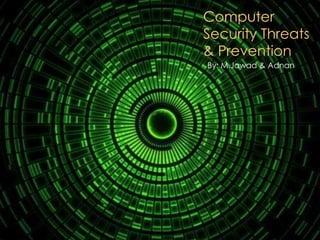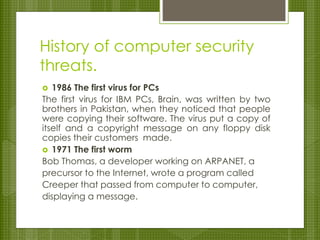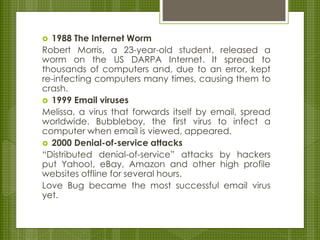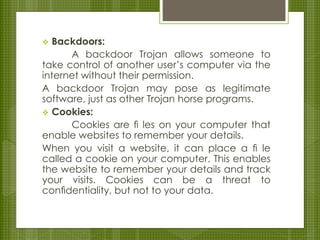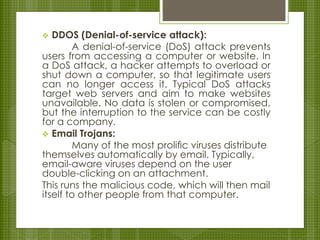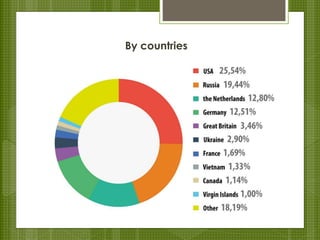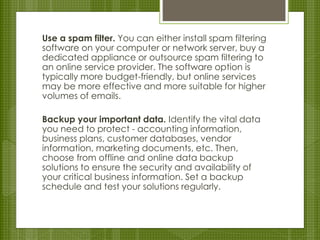The document discusses computer security threats, defining what constitutes a threat and outlining various types, including malware, spyware, and DDoS attacks. It provides a historical timeline of significant computer viruses and attacks, highlighting the evolution of threats from the 1970s to the early 2000s. It concludes with prevention strategies, emphasizing the importance of securing networks and data through methods like firewalls, antivirus software, and regular updates.
